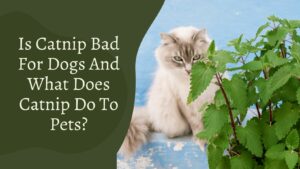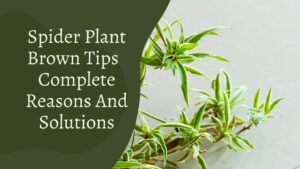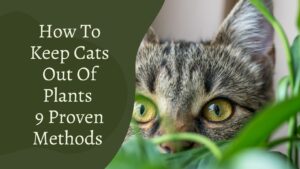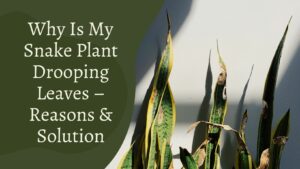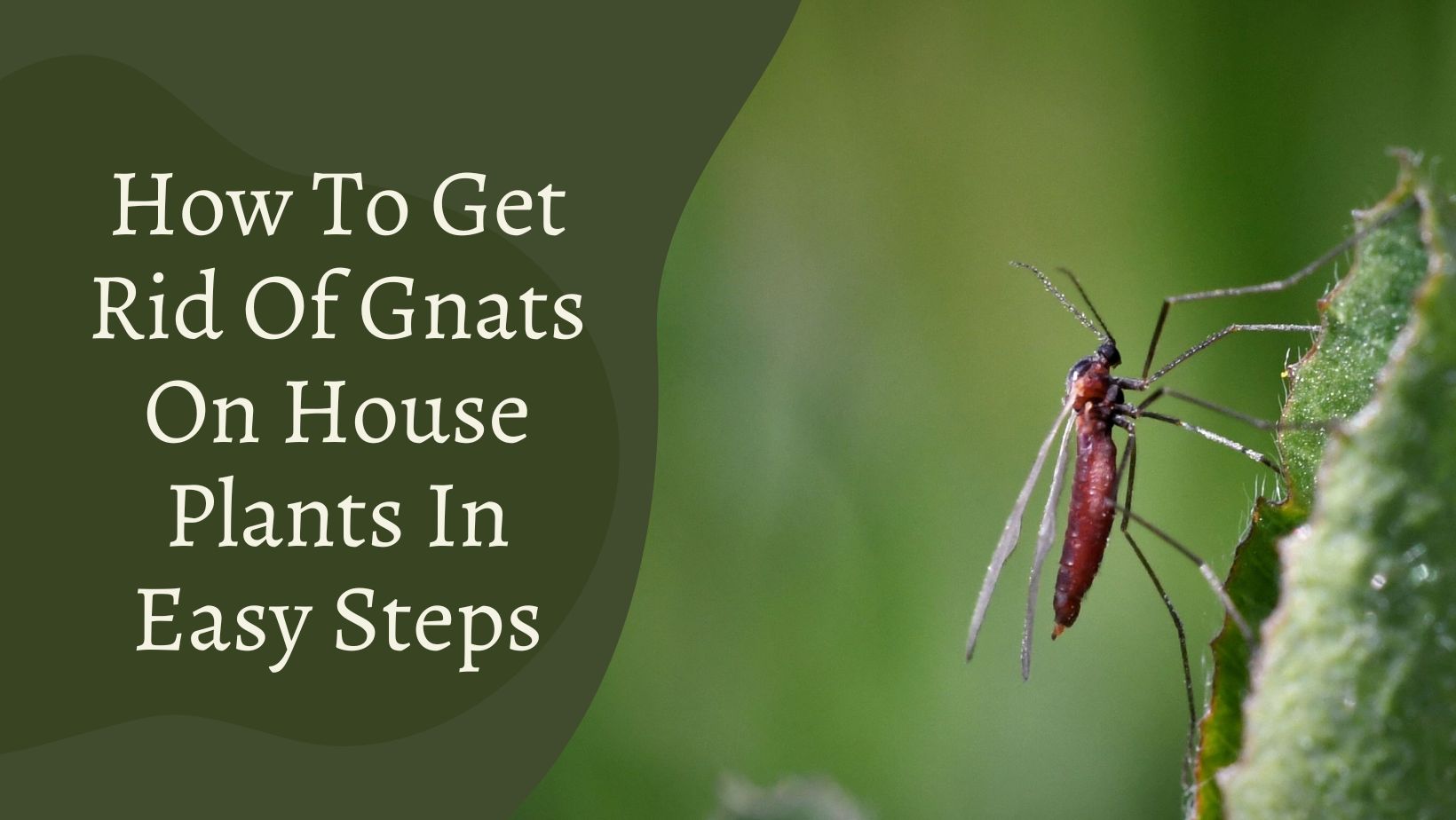
You are probably here because you are facing fungus gnats on house plants. You must face gnats on indoor and outdoor plants as a gardener. Fungus gnats are precisely the ones that come from the Sciaridae family are the most destructive, especially to our indoor house plants. They are super annoying, and it seems like they have a never-ending cycle of dealing once you get them. That’s why we are going to a deeper level and understand where gnats come from, how to kill gnats in plants, and How to prevent gnats in houseplants.
When it comes to pests or any organism, including these plants that we are growing, it helps us understand how they live, how they reproduce, and their life cycle. So, let’s talk about their life cycle first.
First of all, where do gnats like to lay their eggs? Gnats like to lay their eggs in moist soil near the pant base. The egg will go for about four to six days then larval stages come out. When the larval stage comes out, it has about a two buffet period feasting on the organic matter. It’s feasting on dead or decaying or diseases root. Still, they go through a pupil stage of about three to four and then become adults again. That adult lives about a week or so. The problem is that those adults are a 1 to 300 ratio means those adults can lay eggs about 300 ratios which means that if you miss one of them, you will never stop having a fungus gnats problem that’s the most annoying thing in them.
Symptoms Of Fungus gnats on house plants:

- Plant growth stops:
Your plant does not look very vigorous and lacks growth in it. It happens when the larvae eat, chomp away at the plant roots even get into the stems of the plants
- Yellow leaves:
Leaves are not super dark green; they start becoming yellowish when your plant’s leaves suddenly turn yellow, which shows that you will have gnats attack. Gnats are known to damage pothos plants, therefore if you notice your pothos leaves turning yellow, it’s likely that they were bitten by gnats.
- Flies surround the plant:
When you see your plant surrounded by flies, it means that your plant has a fungus attack.
how to get rid of houseplant gnats:
Bottom water:

The big benefit of bottom watering is that if your plant is soaking water from the base, the roots can drink water before the top few inches of soil are saturated. If you aren’t letting your plants sit in the water for a long enough time, it will not create more moisture in that.
If those top few inches of soil are not wet, fungus gnats will not lay their eggs in that soil. When the gnats have nowhere to lay their eggs, they will die.
Let’s plants dry soil more thoroughly:
You should allow your plants to dry a bit more thoroughly between watering again, just like bottom watering that doesn’t give the fungus gnats lots of space to lay their eggs because they don’t want to lay their eggs in dry soil, so letting your plant dry bit more solves the problem of gnats.
Top Sands/Pebbles:

You can also add a top layer of sand or those tiny decorative pebbles to the top of your pots. Just a few inches of sands and stones don’t retain the water like organic material found in the soil.
Putting that pebbles on top allows the water to drain completely, and with sand, it is difficult for gnats to climb down to the soil.
Vinegar Traps for gnats on house plants:
Some still think about getting rid of gnats in houseplants with vinegar. You can also try some DIY vinegar traps for bugs, especially if you naturally wonder how to get rid of flies in house plants. Although this is not as effective, you have to keep doing it for a lot longer than some of the other methods.
You can do these traps by getting a mason jar or a cup, then fill the container about halfway with apple cider vinegar then, take a piece of saran wrap, fold it over the top of the container and add a rubber band around the top to hold that saran wrap in place.
then poke some holes in it that’ll get rid of gnats because they go in there and try to eat the apple cider vinegar, they get trapped and eventually drown in apple cider vinegar.
You should also make sure to keep changing apple cider vinegar after every 4 to 5 days. It is not as effective as other methods because, by this method, you can only trap the adults; all the eggs and larva will remain in the soil.
Sticky Traps:

The fit solution for fungus gnats on house plants is to use sticky trap .you can place the sticky traps in the soil. It contains a sticky protective layer; if a bug flies and lands on it, the bug will get stuck on it, and it will not be able to move and reproduce. This method also works for other pests, which is one of the extra benefits of this method.
Mosquito Bits:
It’s recommended to sprinkle these bits on top of the soil, or you can also mix them in the soil. Mosquito bites are not harmful to your plants, but they can be an eyesore, So by mixing them into the soil, you don’t have to look at them.
You can also soak them in water to help some of the bacteria within the bits seep into the water and then water your plants with that. The organic material in your soil will absorb the water and have the fungus gnats feed on that bacteria, which is what we want. In this way, you can get rid of them easily.
Hydrogen Peroxide:
If you have Gnats in houseplants, hydrogen peroxide is also a solution for it. You have to give your plants a hydrogen peroxide soak, so this is not something you can do all of the time, but maybe twice a year or so, it’ll be fine for your plants.
Basically, you can mix one part of hydrogen peroxide and one part of water and make a solution for them. Water your plant in which fungus gnats seemed to be emerging out. Hydrogen peroxide will kill them.
Neem oil:
You can also use neem oil to get rid of fungus gnats because it is pretty easy to eradicate in the case of fungus gnats. Since fungus gnats do mostly live in the soil, that’s kind of where you need to focus this, So you can give your plants a neem oil bath to get rid of fungus gnats. Make sure that the top few inches are entirely soaked by oil.
Neem oil will not damage your plant. Oil actually thoroughly coats the bug itself, preventing it from breathing so it’ll suffocate the bugs to death. Suppose a bug-eating the foliage of your plants by this method, Your plant hopefully absorbs some of the oil out of the soil. In that case, the bug is eating residual neem oil within the leaves, same as eating organic material in the soil that has absorbed the oil it prevents the bug from maturing.
Steel wool:
The steel wool actually acted as a net .you can lay this net on top of your soil. It’s recommended to use refined or superfine coarseness because basically, once the larva sheds and the baby gnats emerge, you don’t want them flying through the steel wool.
You cannot use a steel sponge because the holes are so large you’re basically going to have all these baby gnats flying everywhere, and it defeats the entire purpose.
Use Gnats vacuum:

It’s basically not a zapper, but it is electronic. Just set up a vacuum in the area where we have most of our tanks and where most of the gnats are breeding coming from. Turn it on; it has a fan that sucks in the air, so like said, it’s a gnat back.
The key here is why it attracts gnats? The answer is it has a UV light on the top, and gnats just love the light. It has no chemicals and is also does not create noise. They are also safe for the animals.
Sanitation:
To tackle any type of flies may find indoors you need to dispose of the sources of food on which they develop. This will help stop the breeding of flies. Although adults are already present, there may remain for a week or more until they die out.
Using Homemade spray for fungus gnats:

Take some water in the bottle and add some drops of liquid dish wash to it. Spraying it on the top of the soil will kill the gnats. Please repeat this step for a few days to ensure that you have killed all of them.
Use sterile potting soil in the home for gnats on house plants:
Decreasing both the humus content of the houseplant potting mix and the moisture will make the soil less attractive to the gnats, and It also decreases the chances of gnats production in a given period of time.
Now we have also seen how to get rid of fungus gnats, but the question is still the same:
where do gnats come from:
The answer to this question is simply moisture. Moisture is a breeding ground for gnats. You can find moisture in your home from your drain to your garbage to even condensation on your window sill, but the most common for indoor plants is all the moisture in your soil.
Gnats reproduce in that wet and moist soil in your indoor plants that are partially shaded. They thrive in that overwater plant, especially when it is hidden in the shade. The larval feeds on fungus growing the soil and the moist organic matter. So if you overwater your plants, you will face the fungus gnats definitely.
fungus gnats vs fruit fly
Fruit flies:

Fruit flies tend to be more slower. They are a little bit bigger, pudgy, and fatter looking. You can see their eyes if you look close to them; they tend to be red and yellowish eyes. Fruit flies are also kind of clumsy; they don’t always fly. They also jump, and you see more bodies in them than in the wings. As their name fruit flies hanging around the fruits, they also hang around other food.
- Where fruit flies on plants come from:
Fruit flies tend to come from rotting fruit and vegetables, so they are attracted to foods.
fungus gnats on house plants:
Fungus gnats on house plants are a lot more swift, so fungus gnats seem a little more agile. They are a lot smaller. When you look at them, you’re mostly just going to see wings; you don’t see much body at all, and you definitely can’t see their eyes. Fungus gnats also hang around the soil and water and just tend to fly around the air; you don’t see them attracted to food as much. You see, both are attracted to light, but fungus gnats like more light than fruit flies. They also like hanging plants like string of dolphins plant, strings of pearls, and strings of turtles plants.
- Where to Fungus gnats on plants come from:
Fungus gnats tend to come in with contaminated soil, so if you bring in a house plant and you suddenly notice little flying things around you, those are fungus gnats. If you brought a plant to put in an enclosure and you didn’t correctly quarantine it again, but if you’re going to notice it hanging around potted plants, then those are fungus gnats.
Other types of flies that affect your house plants:
Groos mealybugs:

They are white sticky and kind of get in the crevices of your house plants. Mealybugs suck the sap and juices in your house plants. They don’t move a lot. They just get into your plant from a cluster, and start eating and laying eggs in your plants.
Squishy Aphids on house plants:
They have pear-shaped bodies and different colours like red, black, and others. They have their little piercing sucker mouth by which they suck all the juices of your plants.
Sneaky Whiteflies on house plants:
Whiteflies are much more common outdoor, but they also happen indoors too. To get rid of them, just use a cold spray of water to push them off from your plant; other than this, you can also use neem oil.
Nasty Scale on house plants:
This insect almost acts like a mollusk; it’s a soft-bodied insect that creates a hard shell over it, then it protects itself and lays eggs under the shell. You can manually remove them by scratching them off. Other than this, you can get rid of them by constants neem solution.
Spider Mites on house plants:

They are such tiny, really hard to see them and have very fine webbing. When you have spider mites, you will notice that the foliage will have little conducts all over it where they suck out and eat part of the plant. They have different colours and are just as annoying as other insects. You can prevent your plant from getting them by washing your plant at least once a week, and also you can use neem oil as a preventative
So after washing the leaves, spray them with neem water and then repeat the process again next week.
How to get rid of fruit flies:

Fruit fly because it comes from the fruits; the way you want to get rid of them is to get rid of the source, and so if you have any older rotting fruit lying around, throw it away. You want to be a clean person anyway, so throw away old rotting fruits and vegetables and stuff like that. If you have healthy new fruits and vegetables that you kind of keep out in, like in a fruit bowl or something like that, for the time being, Use a ziplock baggie and then just keep them sealed until you are taking something out of that. Basically, you do not want this accessible to anything from outside.
Sometimes they will breed in drains especially sink drains because you use your sink for washing and the food will fall down there so sometimes fruit flies attracted to sink drain, and they’ll go down there, so The method that is recommended is boiled pot of water and then slowly dump all of that boiling water down the sink drain. The water will kill all the flies and eggs that are hanging out in the drain and also flush them down.
Another way of getting rid of fruit flies is to use vinegar in a little cup trap. So for the trap, you have to take apple cider vinegar in the container, or you can also use regular vinegar.
Just take the container to fill a little bit with apple cider vinegar and put a couple of drops of dish wash, then you’re going to cover over the top with saran wrap or plastic wrap and then put holes in it.
Conclusion:
Fungus gnats on house plants are seemed like black mosquitos hover in a small group just above your indoor plants. While the adults may be flying around, they’re only annoying. They don’t do much damage to plants. Damage is happening with larva because they live under there and chew away the plant roots, even getting into the stems of plants. To get rid of them, you can also use home remedies for gnats in houseplants like cutting the potato slice and leaving it overnight, and check in the morning you will get gnats trapped in it. Gnats can come from newly purchased plants, so be careful while buying new plants from the nursery and if you face them, then use the method described above to get rid of gnats on house plants.

Hi This is Maria, We are a team of gardening enthusiasts with a passion for gardening. We have tried to bring you tips and advice enabling you to grow and maintain a healthy and beautiful garden. We Hope You Find it Useful.


